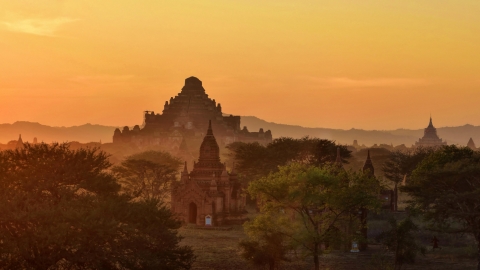Between the sixth and fourth centuries BC, Buddhism was established in northeastern India and quickly spread across the Asian subcontinent, influencing cultural and spiritual practices, art, and architecture. Today, about half a billion people worldwide practice Buddhism, whose beliefs are founded on principles such as the Four Noble Truths and the pursuit of nirvana. While traditional Buddhist temples often reflect the architectural style of the region in which they are located, most are designed with the higher purpose of facilitating a space for contemplation and quiet meditation.
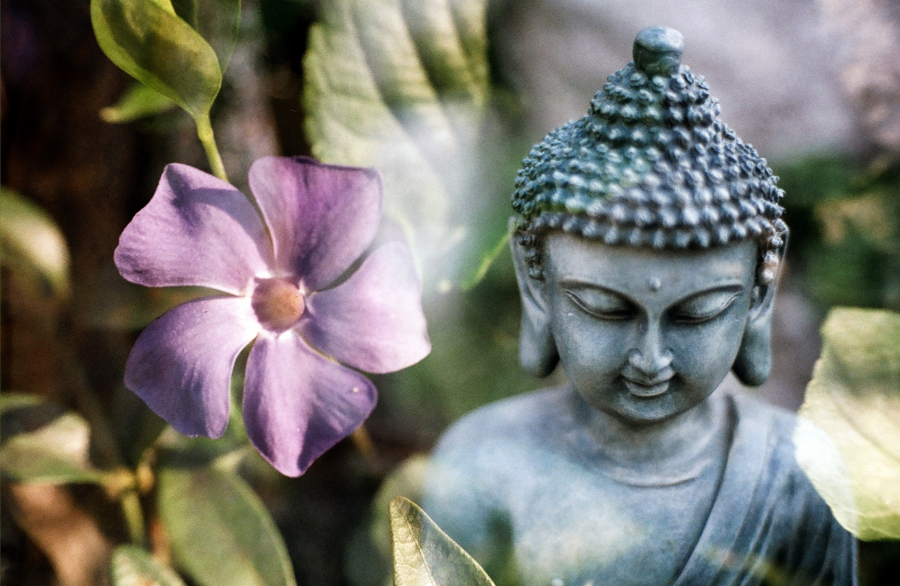
Etiquette at Buddhist temples is also generally the same. Visitors should remove their shoes at the door, wear clothing that covers their knees and shoulders, and keep noise to a minimum. Pay attention to signs posted around the temple grounds and avoid taking disturbing photos, especially when monks are praying.
According to a survey by National Geographic, below are 20 beautiful Buddhist temples with a long history and certain influence in the world that tourists should visit.
1. Bagan, Myanmar

The ancient capital of Bagan was once home to around 10,000 Buddhist structures. Today, the dusty paths that weave around the remaining 2,000 or so temples, from Dhammayangyi, Bagan’s largest, to Shwezigon, Myanmar’s first gilded temple, still make it an irresistible religious destination.
2. WAT BENCHAMABOPHIT, Thailand
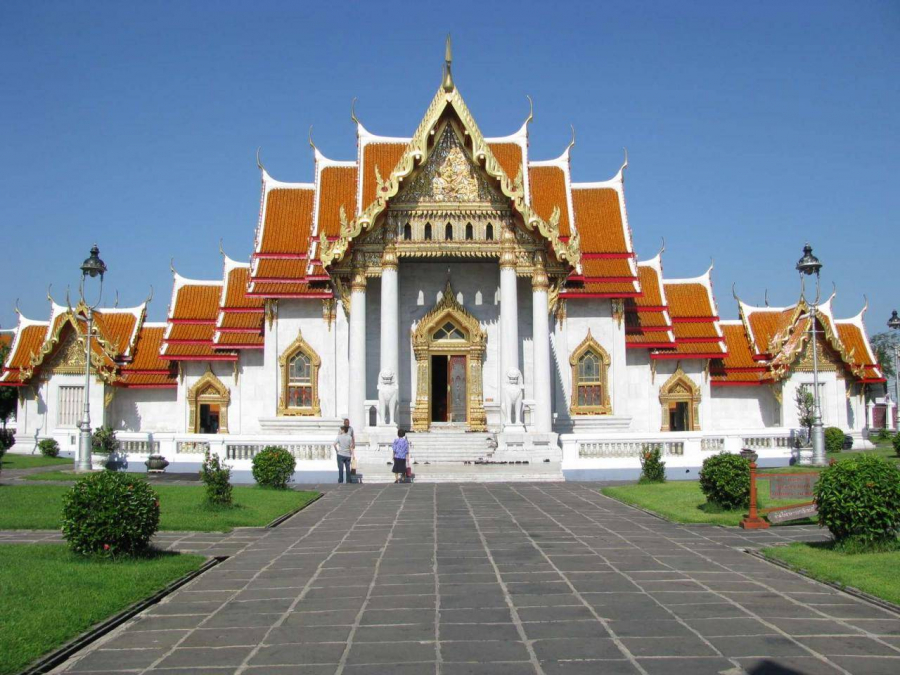
Bangkok's Wat Benchamabophit was completed in 1911 and is built entirely of imported Italian Carrara marble. The arched windows and stained glass depict Thai "theppanom," or "angels." The temple gallery features 52 Buddha statues on individual columns, representing the diversity of Buddhist iconography across different periods and locations.
3. SEIGANTO-JI, Japan
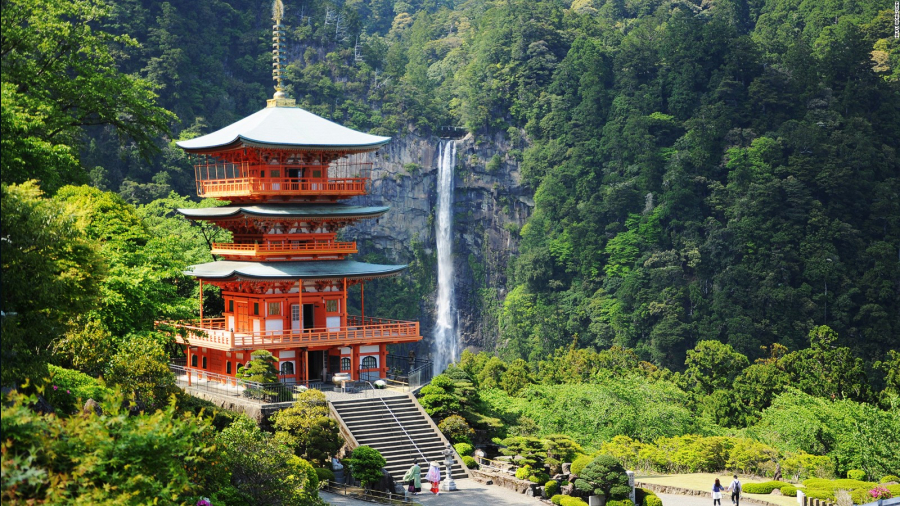
Located near a rocky outcrop with Japan’s tallest waterfall, Seiganto-ji is a sanctuary on the edge of the Tendai Forest – a rationalist school of Buddhism that believes in an ever-changing existence. Seiganto-ji is also a stop on two different pilgrimage routes: the 33-temple Saigoku Trail and the ancient Kumano Kodō – one of only two UNESCO-recognized pilgrimage routes in the world.
4. WAT RONG KHUN, Thailand
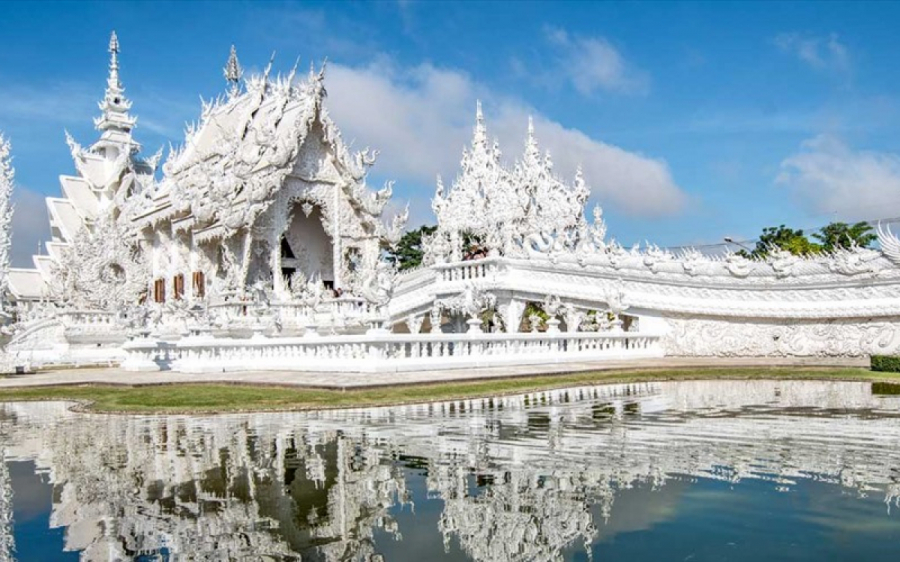
Founded in 1997, the white-washed Wat Rong Khun temple in northern Thailand was designed and funded entirely by Thai artist Chalermchai Kositpipat. Mirror mosaics cover the facades, and depictions of Spiderman, Michael Jackson and Hello Kitty decorate the colorful main interior. Despite its modern flair, visitors are expected to dress modestly and behave with the same respect as when entering a traditional temple.
5. PARO TAKTSANG, BHUTAN

Paro Taktsang is located in Bhutan’s Paro Valley. It is a cliffside temple that can only be reached by a semi-steep hike past a waterfall, by a bumpy cart, or viewed from afar from a Tibetan-style teahouse with a view. Padmasambhava, the master responsible for bringing Buddhism to Bhutan, is said to have meditated for three years in the Paro Taktsang cave after flying on the back of a magical tigress, hence its nickname “Tiger’s Nest.”
6. TAUNG KALAT, MYANMAR
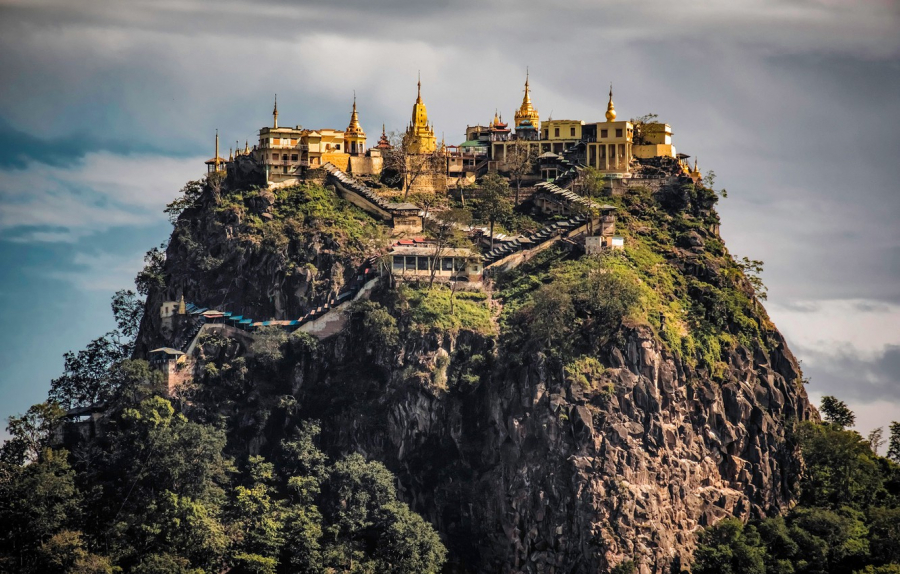
King Anawrahta of Burma in the 11th century began incorporating nat (ancient spirit) worship into Buddhist temples and practices. Thirty-seven nat (humanoid) statues were erected at the base of the 777 steps leading to the entrance of Taung Kalat, a small temple perched atop a 557-foot-high volcanic mountain in central Myanmar, to demonstrate this devotion.
7. WAT XIENG THONG, Laos
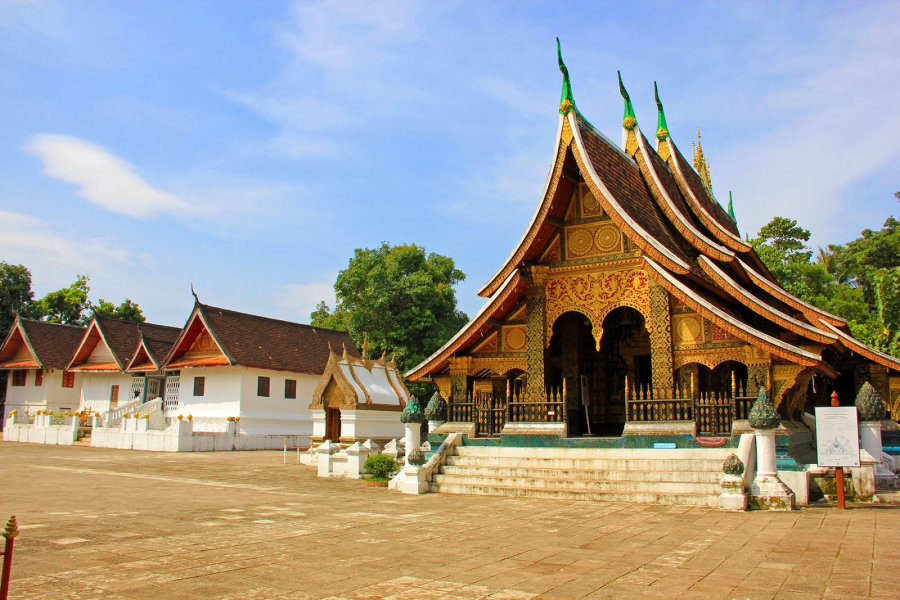
Wat Xieng Thong, whose name can be translated as “golden city” or “torch tree,” is the sacred site of coronations and Laos’ annual New Year celebrations. Set elegantly on the Mekong River, the temple’s back wall sparkles with a colorful mosaic of the tree of life. Luang Prabang-style roofs often end in a curved line meant to trap evil spirits.
8. MAN MO TEMPLE, HONG KONG

Red paper wishes are often hung from the ceiling throughout Hong Kong’s Buddhist and Taoist Man Mo Temple, built in 1847 to honor the god of culture (Man) and the god of war (Mo). In addition to making wishes to the gods, visitors can also shake bamboo sticks (divinations) and have their futures interpreted by the temple’s fortune tellers.
9. Tran Quoc Pagoda, Vietnam
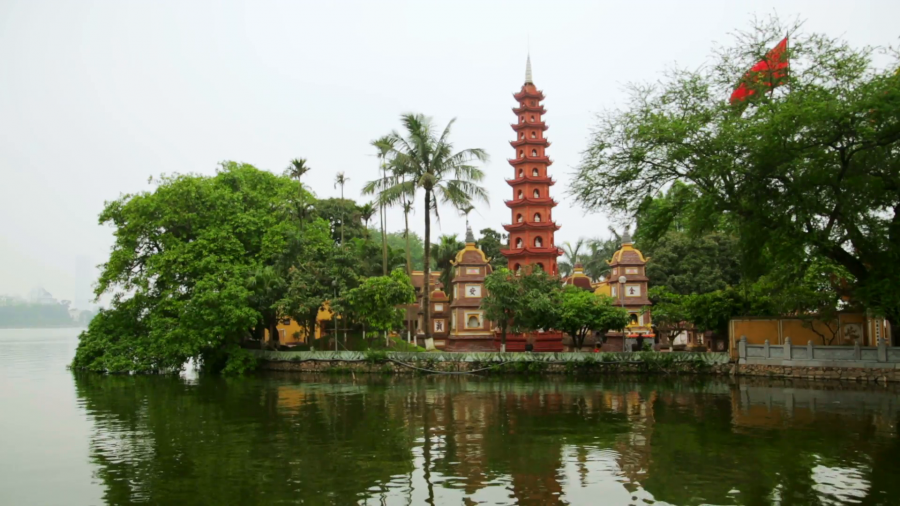
The 6th-century Tran Quoc Pagoda floats on a small island in Hanoi's West Lake. The 11-story red pagoda is topped by a nine-story lotus. Gold and bronze statues adorn the various altars in the pagoda, and three different female Buddhas, known as "Mau," sit in the front yard.
10. KYE GOMPA, India
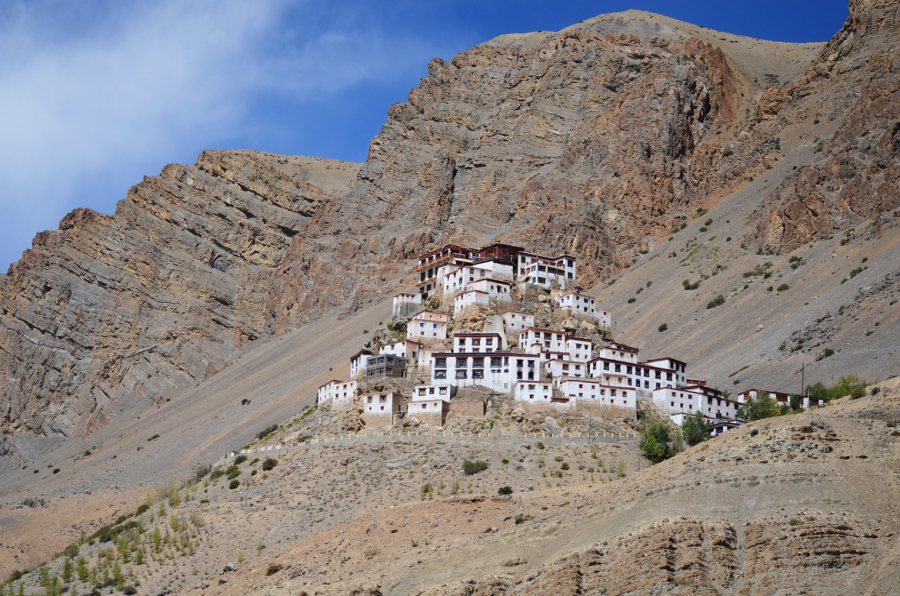
Since its construction over a thousand years ago, India’s Kye Gompa temple has been attacked by armies over the centuries, suffered fires, and most notably suffered an earthquake in 1975. Nestled in the Himalayas at an altitude of 13,668 feet above sea level, the temple is built with multiple layers of walls and is an example of the multi-tiered Pas Pasada fortress tower architecture. It also hosts spiritual retreats for foreign visitors.
11. Buu Long Pagoda, Vietnam
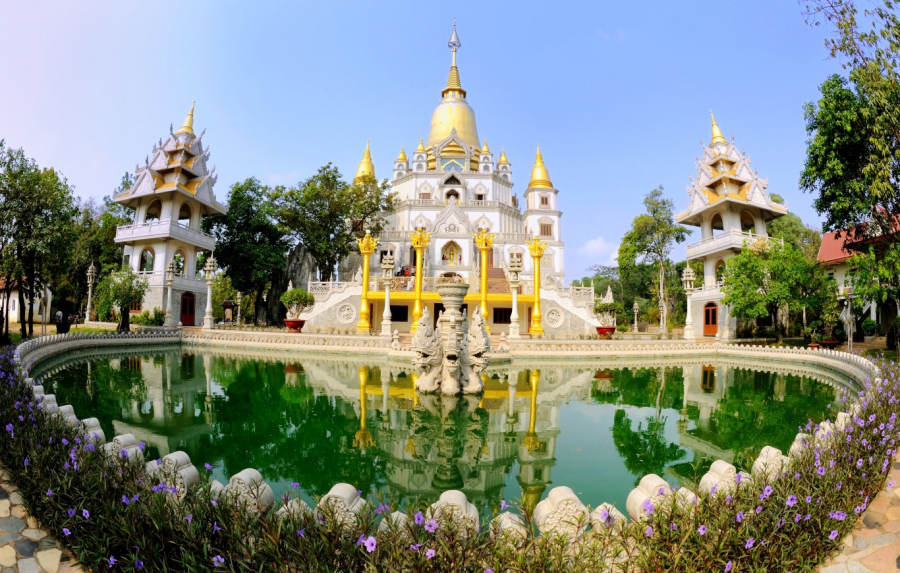
Just 45 minutes east of Ho Chi Minh City, visitors can reach the riverside Buu Long Pagoda, where carved dragons curve up the stairs and a turquoise lake reflects the temple's white walls and golden spire.
12. MAHABODHI, India

The Mahabodhi Temple, which is over 2,000 years old, is one of the most sacred sites of Buddhist pilgrimage. A giant Bodhi tree stands to the west of the temple, believed to be the spot where Buddha attained enlightenment. Meanwhile, stone petals scattered throughout mark the path where lotus flowers bloomed at Buddha's feet as he walked and meditated.
13. BYODO-IN TEMPLE, HAWAII
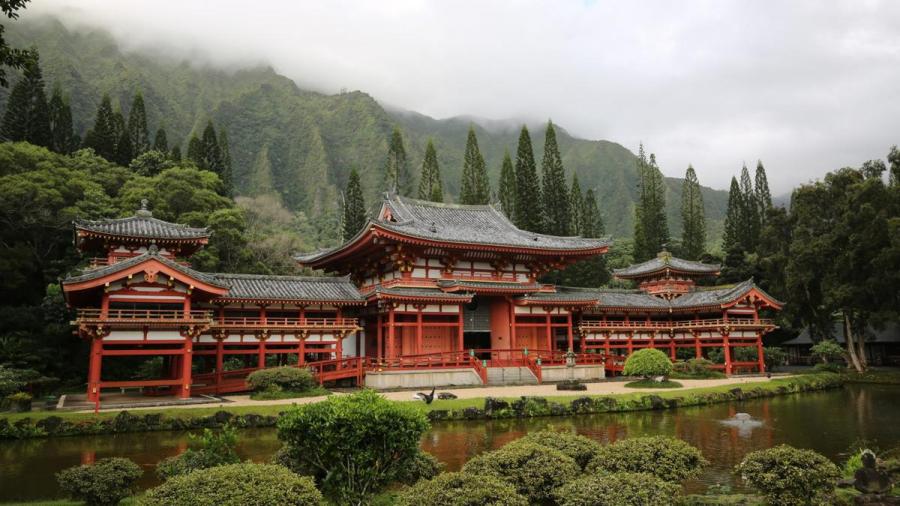
Built from the ground up to commemorate the centennial of Hawaii’s first Japanese immigrants, the Byodo-In Temple in the O’ahu Valley is a replica of the original Byodo-In Temple in Kyoto. It houses a 9-foot-tall golden Amida Buddha. Peacocks, black swans, and turtles roam the grounds, and the surrounding garden ponds are filled with large schools of koi fish, some 100 years old.
14. ANGKOR WAT, Cambodia

Angkor Wat is the largest religious structure ever built in the world. Originally dedicated to the Hindu god Vishnu, the Cambodian people turned the sandstone temple over to Theravada Buddhism near the end of the 12th century. Spanning 401 acres, Angkor is a religious icon visited by pilgrims from all over the world.
15. GYEONGBOKGUNG Palace, South Korea
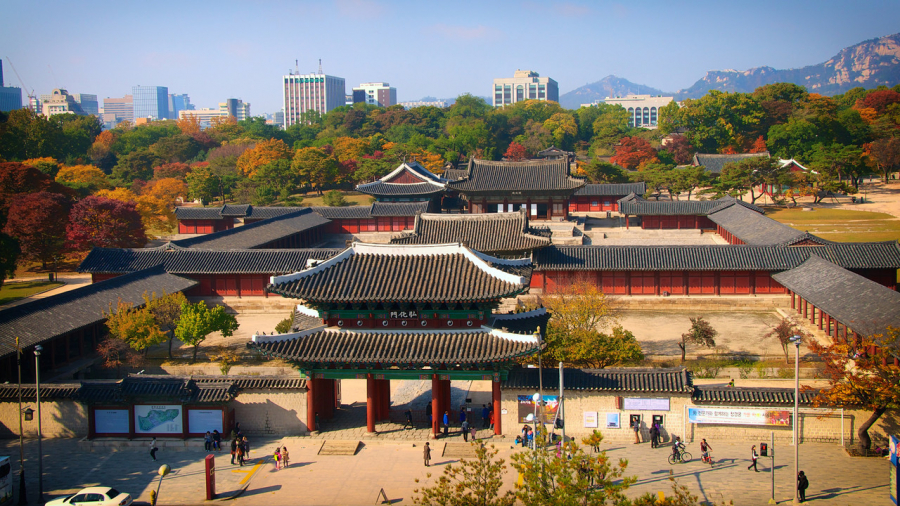
Nestled in a lush garden paradise and nestled between the Bukansan Mountains and Seoul's glass skyscrapers, the Joseon Dynasty's Gyeongbokgung Palace once contained over 500 buildings. Many of the spaces, including the inner palace, banquet pavilions, temples, shrines, lotus ponds and gardens, remain intact to this day. Notably, the palace has chimneys above to release ondol smoke and an advanced underfloor heating system that dates back thousands of years.
16. DATSAN GUNZECHOINEI, Russia
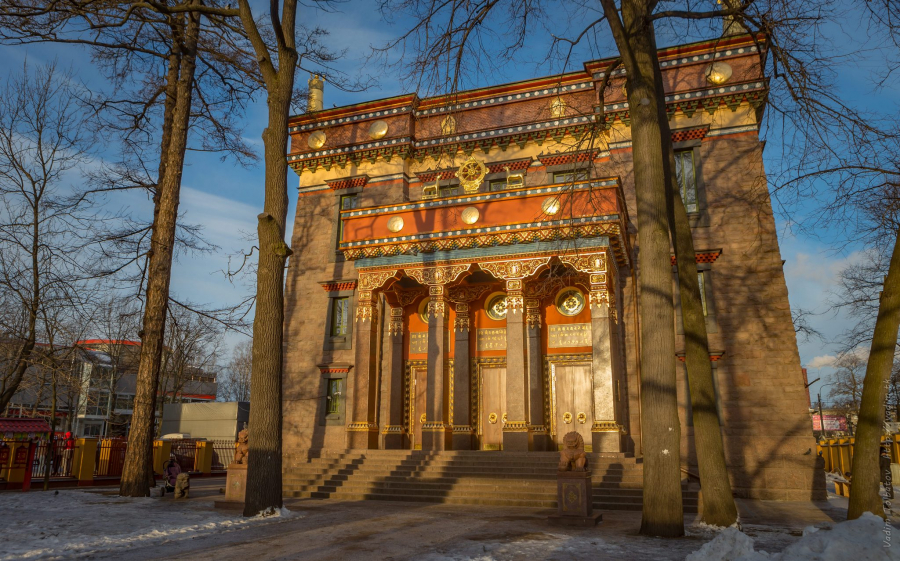
Russia is home to around 1.5 million practicing Buddhists and St. Petersburg is home to Datsan Gunzechoinei – one of the northernmost Buddhist temples in the world. Although it is a purely religious place today, in the past it was used for military communications, sports and zoological research.
17. Gangtey Monastery, Bhutan
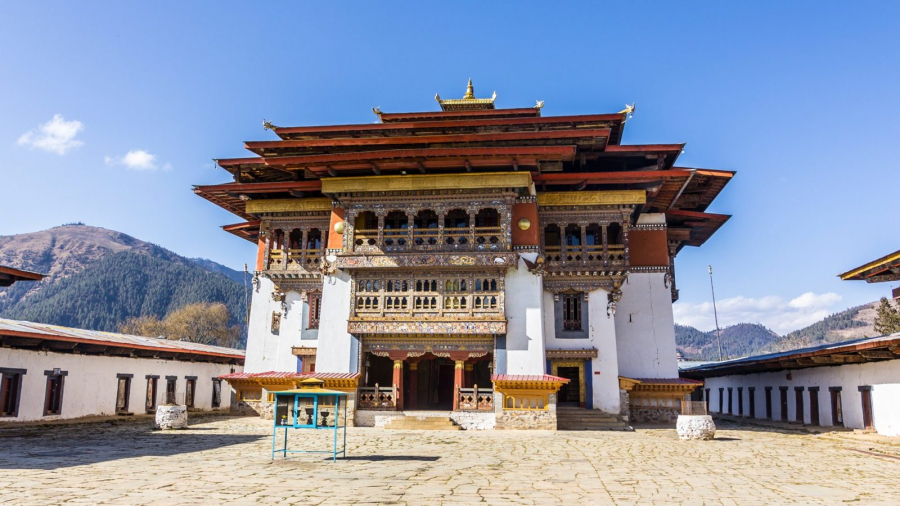
Set amidst nomads, yak farmers and the largest natural wetland in Bhutan, Gangtey Monastery is one of the Nyingmapa monasteries. Every November, locals gather in the temple grounds to dance in black and white crane costumes to welcome the migrating black-necked cranes for the winter. The mythical Garuda bird – a Buddhist symbol of wisdom – is carved into the corners of the temple’s exterior.
18. KOPAN Monastery, Nepal

Home to hundreds of chanting monks and meditation students from abroad, Kopan Monastery is located 3.5 miles northeast of Kathmandu on a hilltop that once belonged to a royal astrologer of Nepal. The meditation hall at the center of the monastery is painted in vibrant colors, each with a different meaning: the yellow ceiling symbolizes roots, while the red pillars represent vitality and preservation.
19. BOROBUDUR, INDONESIA
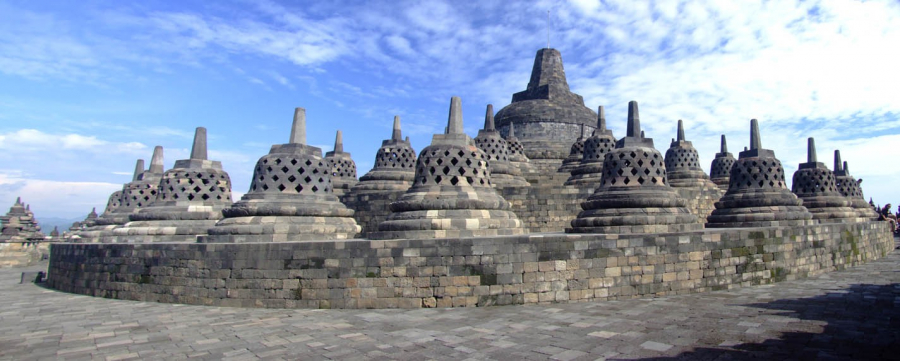
A central Java temple complex, Borobudur is the world's largest Buddhist temple. It features 3,000 relief sculptures, 72 latticed stupas, and 504 Buddha images, all arranged in a lotus shape against the backdrop of the Menoreh Mountains. The climb from Borobudur's eastern nine-step staircase to the temple's final stupa is approximately three miles.
20. THEAN HOU TEMPLE, Malaysia
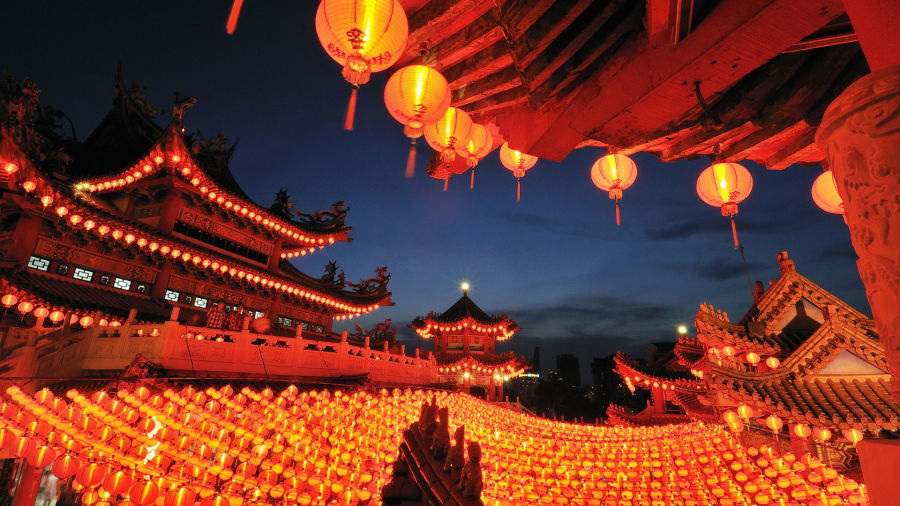
Thean Hou Temple, known as the “paradise queen” by Muslims because it sits under the shade of a tree where Buddha is said to have attained enlightenment, is perhaps most impressive at dusk during Chinese New Year, when thousands of illuminated red lanterns are drawn from the temple’s eaves.

























